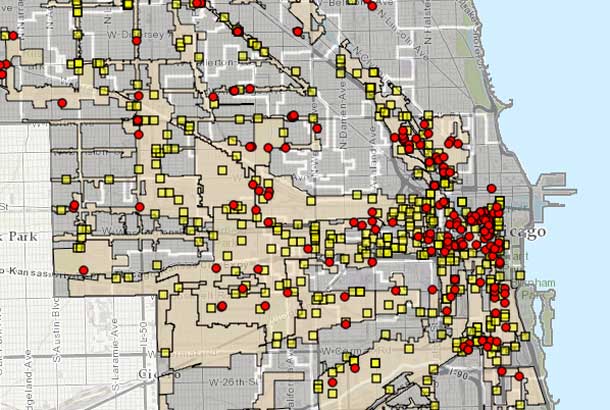 CHICAGO – For major American cities, boosting economic development is a key to urban prosperity. Chicago has unveiled a new project to reform Tax increment financing, or TIF.
CHICAGO – For major American cities, boosting economic development is a key to urban prosperity. Chicago has unveiled a new project to reform Tax increment financing, or TIF.
TIFis a public financing method that is used as a subsidy for redevelopment, infrastructure, and other community-improvement projects in many countries, including the United States. Similar or related value capture strategies are used around the world. If the cost of basic services increases, with TIF in place, the result is a revenue shortfall that has to be paid from sources other than tax revenues of the TIF district.
TIF is a method to use future gains in taxes to subsidize current improvements, which are projected to create the conditions for said gains. The completion of a public or private project often results in an increase in the value of surrounding real estate, which generates additional tax revenue. Sales-tax revenue may also increase, and jobs may be added, although these factors and their multipliers usually do not influence the structure of TIF.
TIF Portal Helps Chicago
Mayor Emanuel today announced the launch of the City’s first-ever TIF Portal as an easy to navigate geography-based representation of TIF districts and project data. This effort will provide will allow people in Chicago to review TIF project data on a map and the ability to review TIF project data by address, a project name, a TIF district name and or a ward number. In conjunction with the launch of the TIF Portal, over 2,000 rows of new infrastructure data have been made publicly available.
“This critical reform will strengthen the transparency and accountability involved in TIF projects, and will help the city focus programs on job creation and economic development,” added Mayor Emanuel.
The TIF Portal is a step in a series of TIF reforms intended to improve accountability and make information regarding the TIF program more accessible to the Chicago public. The TIF Portal is accessible at cityofchicago.org/ChicagoTIF and provides the following information for each TIF district:
● A description of the purpose of the district;
● The investments that have been made in the District that have been approved by City Council;
● A list of redevelopment projects approved by City Council for the district; and
● Links to important documents for the district such as the establishment ordinance approved by City Council, the most recent annual report, and district revenue projection data.
The TIF Portal also provides the following information for each TIF-funded redevelopment project:
● The name of the developer;
● The TIF funds approved by City Council;
● The project’s address;
● A brief description of the project; and
● Links to important documents for the project (as applicable) such as the redevelopment ordinance, the Community Development Commission report, and the certificate of completion.
Falling in line with previous reforms, the TIF Portal is meant to establish accountability and ensure taxpayer dollars are spent in accordance with a new long-term strategic economic development plan. The City intends to asses additional data to the TIF Portal in the future, including district and project performance data that will be collected and published for the first time.
Previous reforms to the TIF program include a comprehensive online TIF database, which tracks all projects in one place and provides public access to the information. To enhance accountability, the monitoring of TIF performance was moved to the Department of Revenue, which hired independent auditors to perform random audits. Every proposed private development TIF project now has an assessment report that is posted online before City Council consideration, outlining the project’s ability to create jobs and provide return on investment for the city. A specialized TIF Reform Task Force was called to provide insight into the best methods of reforming the TIF program for maximum effectiveness.





